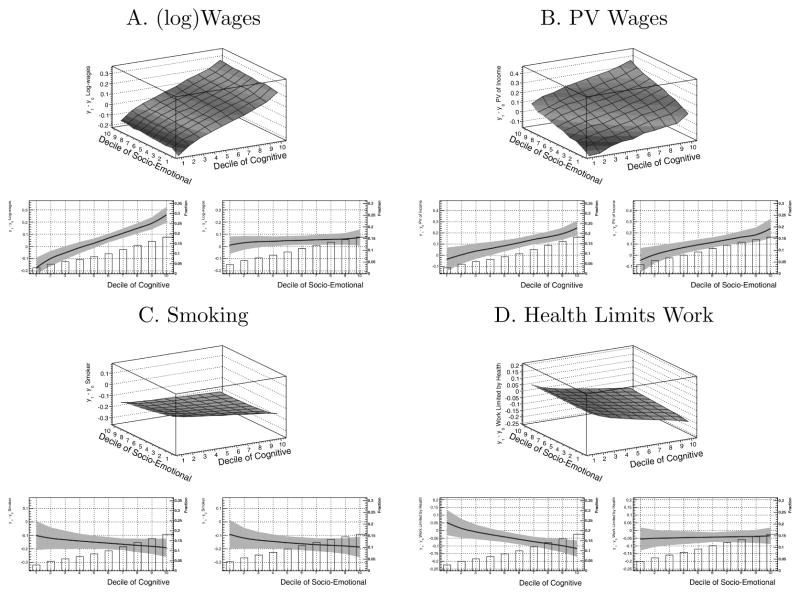Figure 6.
Average Treatment Effect of Graduating from a Four-Year College by Outcome
Notes: Each panel in this figure studies the average effects of graduating with a four-year college degree on the outcome of interest. The effect is defined as the differences in the outcome between those with a four-year college degree and those with some college. For each panel, let Ysome college and Yfour-year degree denote the outcomes associated with attaining some college and graduating with a four-year degree, respectively. For each outcome, the first figure (top) presents E(Yfour-year degree − Ysome college|dC, dSE) where dC and dSE denote the cognitive and socio-emotional deciles computed from the marginal distributions of cognitive and socio-emotional endowments. The second figure (bottom left) presents E(Yfour-year degree − Ysome college|dC) so that the socio-emotional factor is integrated out. The bars in this figure display, for a given decile of cognitive endowment, the fraction of individuals visiting the node leading to the educational decision involving graduating from a four-year college. The last figure (bottom right) presents E(Yfour-year degree − Ysome college|dSE) and the fraction of individuals visiting the node leading to the educational decision involving graduating from a four-year college for a given decile of socio-emotional endowment.

